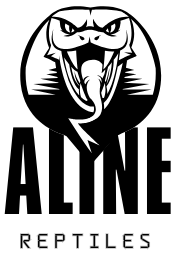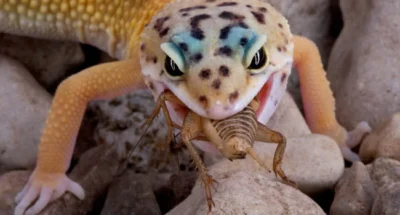Leopard geckos are some of the most popular reptiles to keep as pets, thanks to their docile nature, easy care, and striking appearance. One of the most important aspects of caring for these amazing creatures is understanding their diet.
A healthy leopard gecko diet is key to their growth, energy, and overall well-being. Whether you’re a new gecko owner or have had one for a while, knowing what to feed them and how often is crucial for maintaining their health. This guide will walk you through everything you need to know about leopard gecko nutrition.
In this guide, we’ll explore the essential components of a leopard gecko diet, including the best insects to feed, how often to feed, how to supplement their diet with vitamins and minerals, and much more. Whether you’re just starting or looking to improve your current feeding routine, this article will provide you with all the knowledge you need.
Types of Suitable Insects
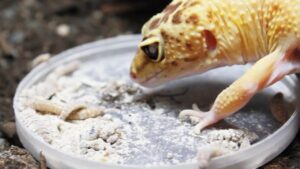
The foundation of a leopard gecko’s diet is high-quality insects that provide the nutrients they need to stay healthy and energetic. Below is a breakdown of the best insects for leopard geckos, divided into staple feeders and occasional treats.
Staple Feeders
These insects should make up the majority of your gecko’s diet. They are readily available, nutritious, and easy to digest.
| Insect | Description | Nutritional Benefits |
|---|---|---|
| Crickets | Widely available and active | High in protein, low in fat, great for muscle development. |
| Mealworms | A common feeder insect | Rich in protein and fat, but should be fed in moderation. |
| Dubia Roaches | Larger and slower-moving | Excellent source of protein and low in fat, ideal for a healthy gecko. |
Occasional Treats
These insects are beneficial but should be fed sparingly. They offer variety in the diet and are a good source of extra nutrients.
| Insect | Description | Nutritional Benefits |
|---|---|---|
| Waxworms | Soft and fatty | High in fat, best used as a treat. |
| Butterworms | Tender and juicy | Great source of fat and protein, but should not be overfed. |
| Hornworms | Green, plump caterpillars | Excellent for hydration and extra protein. |
These insects should be offered only a few times a week, depending on your gecko’s age and health condition.
Feeding Frequency and Portion Sizes
Feeding frequency varies depending on the age and size of the leopard gecko. Here’s a guide to help you understand how often and how much to feed your gecko.
Juveniles (Under 6 months)
- Feeding frequency: Juveniles should be fed daily, as they require a lot of energy to grow.
- Portion size: Feed them 5-10 appropriately sized insects per feeding, depending on the size of the gecko and the insects.
Adults (Over 6 months)
- Feeding frequency: Adult geckos can be fed every other day or every three days.
- Portion size: 6-8 insects per feeding. Adults generally need fewer insects as their metabolism slows.
Supplementation: Why It’s Essential
While insects provide the bulk of your gecko’s nutrition, supplementation is critical to ensure that your gecko gets all the vitamins and minerals it needs, especially calcium and vitamin D3.
Why Calcium and Vitamin D3 Matter
- Calcium is crucial for bone health and preventing metabolic bone disease (MBD), which is common in reptiles with poor diets.
- Vitamin D3 is essential for calcium absorption. Without it, the body cannot process calcium properly, even if it’s in the diet.
How to Supplement
- Calcium: Dust the insects with calcium powder before feeding your gecko. Use a calcium supplement without D3 for most of the diet.
- Vitamin D3: For geckos that aren’t exposed to UVB light, use a calcium supplement with D3. However, be cautious not to over-supplement, as too much D3 can lead to toxicity.
Dusting Schedule
| Supplement | Frequency |
|---|---|
| Calcium (without D3) | Dust insects every feeding for juveniles, 2-3 times a week for adults. |
| Calcium with D3 | Dust insects 1-2 times a week, or use a UVB light for natural synthesis. |
If you’re using a UVB light in your gecko’s enclosure, it can help produce vitamin D3 naturally, reducing the need for D3 supplements.
Gut Loading Feeder Insects
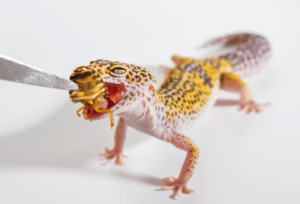
Gut loading is the process of feeding your feeder insects nutritious food before feeding them to your gecko. This helps ensure that your gecko gets all the nutrients it needs, especially if the insects are not naturally nutritious.
Why Gut Load?
Feeder insects often lack the full spectrum of nutrients needed for optimal gecko health. By gut-loading them with nutritious foods, you improve their vitamin and mineral content, enhancing your gecko’s diet.
What to Feed Insects for Gut Loading
| Food for Gut Loading | Nutrients Provided |
|---|---|
| Carrots | Rich in beta-carotene and vitamin A |
| Leafy greens (e.g., collard greens) | High in calcium and vitamins |
| High-quality commercial gut load | Packed with essential nutrients for insects |
You should gut-load your insects for 24-48 hours before feeding them to your gecko.
Hydration Needs: How to Keep Your Gecko Hydrated
Leopard geckos don’t drink much water, but it’s essential that fresh water is always available. They tend to get most of their hydration from their food, especially juicy insects like hornworms.
How to Provide Water
- Water dish: Place a shallow water dish in your gecko’s enclosure. Make sure it’s not too deep, as they might have trouble reaching it.
- Mist the enclosure: Lightly misting the tank can help maintain proper humidity levels and encourage drinking.
Signs of Dehydration
- Dry skin
- Lethargy or loss of energy
- Wrinkled or sunken eyes
If you notice these signs, immediately provide extra hydration, and consider adjusting your humidity levels.
Foods to Avoid
Not all foods are safe for leopard geckos. It’s important to avoid feeding them certain items to keep them healthy.
Fruits and Vegetables
While some reptiles are herbivores or omnivores, leopard geckos are strict insectivores. Avoid feeding them fruits and vegetables, as these do not provide the necessary nutrients and can cause digestive issues.
Wild-Caught Insects
Feeding wild-caught insects is risky because they could contain pesticides, parasites, or bacteria. Always buy feeder insects from a reliable source to ensure they are safe for your gecko.
High-Fat Insects
Insects like waxworms and butterworms are high in fat, which can lead to obesity if overfed. These should only be offered as occasional treats.
Common Feeding Issues
Leopard geckos can sometimes refuse food or have trouble with their diet. Here’s how to handle some common feeding issues.
Loss of Appetite
A gecko may stop eating for several reasons, including:
- Temperature issues (the enclosure may be too hot or too cold)
- Stress or environmental changes
- Illness or injury
If your gecko refuses food for several days, check the enclosure’s temperature and consult a vet.
Overfeeding and Obesity
Geckos can become overweight if they are fed too many high-fat insects or are offered too many meals. Overweight geckos are at risk of fatty liver disease and other health issues.
Nutritional Deficiencies
If your gecko seems weak, lethargic, or has soft bones, it may be suffering from a calcium or vitamin D3 deficiency. Adjust the diet and supplementation accordingly.
Special Considerations
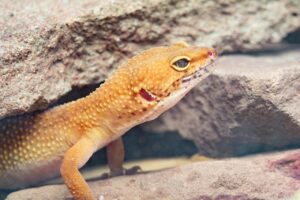
Certain factors might require adjustments to a leopard gecko’s diet.
Breeding Season
Female geckos may need more protein and calcium during the breeding season. You can increase the frequency of feedings and ensure they are getting extra calcium.
Sick or Recovering Geckos
If your gecko is sick or recovering from an injury, it may require extra protein or liquid food. Consider offering softer insects or using liquid food supplements.
Conclusion
Maintaining a proper leopard gecko diet is essential for their long-term health and happiness. By providing a variety of nutritious insects, offering the right supplements, and ensuring proper hydration, you can ensure your gecko thrives in captivity.
Whether you’re feeding a juvenile or an adult, always focus on balanced nutrition, and be mindful of portion sizes, feeding frequency, and the right supplements. A well-fed leopard gecko is a happy gecko, so taking the time to get their diet right will pay off in their health and longevity.
If you’re ever unsure about your leopard gecko diet or have specific concerns, consulting a reptile vet can provide personalized guidance for your pet’s unique needs.
